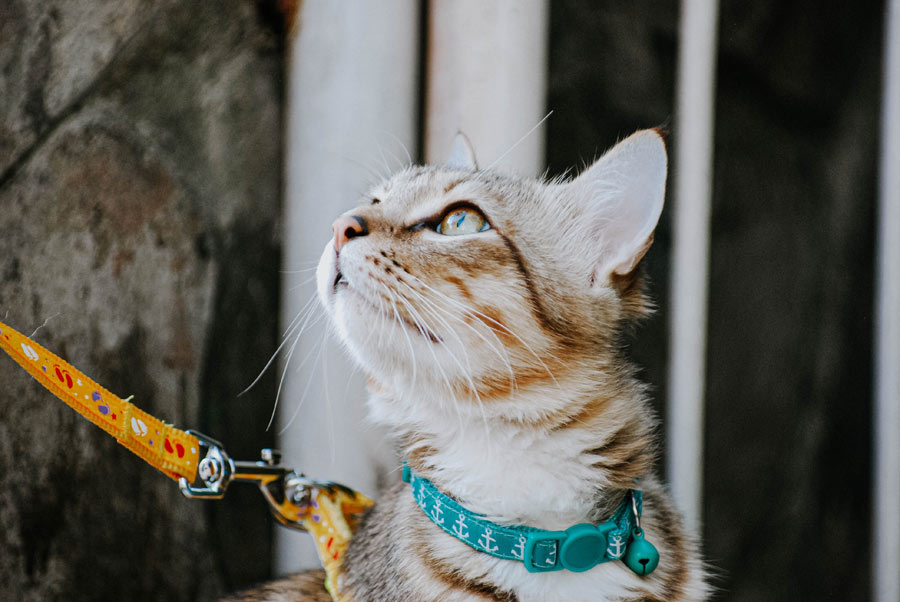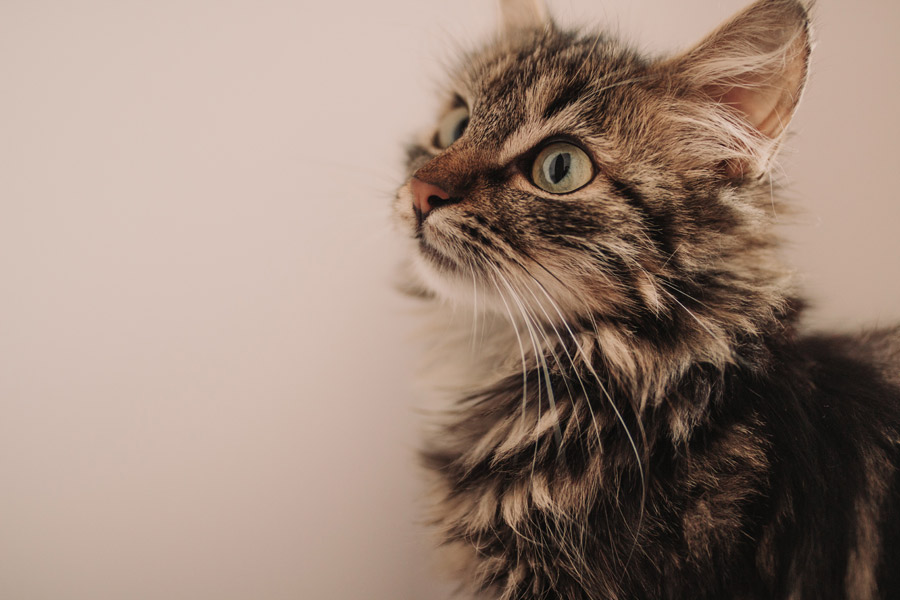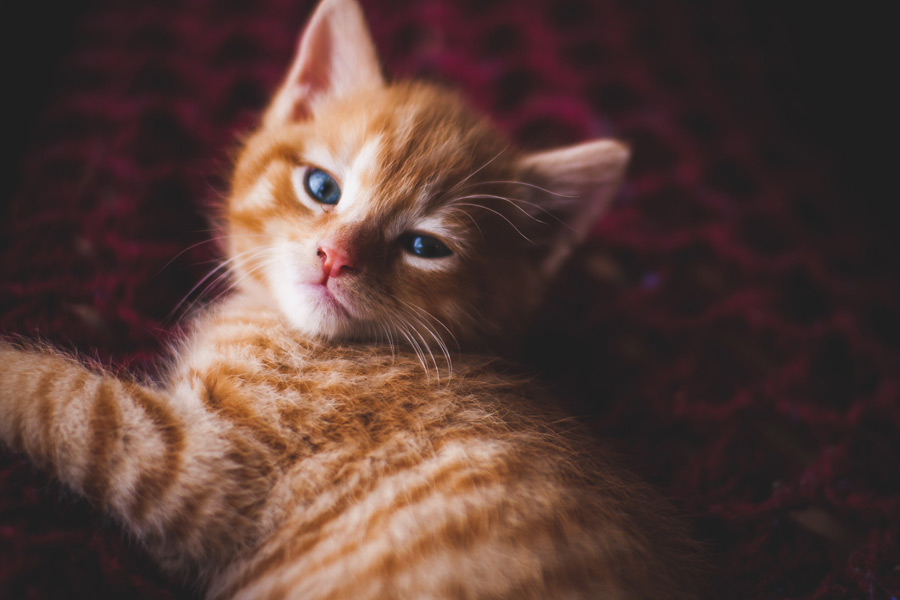Despite their aloof and independent nature, you can indeed train a cat the same way you might train a dog. Why not share some tips with your cat-owning clients on how to do so.
It’s not uncommon for owners to make mistakes when bringing a new cat or kitten into their home. These tips on how to train a cat might make things a little easier.
To start with, discourage pet owners from punishing bad behaviour as part of their cat-training regimen. Instead, advocate patience and using consistent positive reinforcement.
Kristina Vesk, CEO of The Cat Protection Society of NSW, says, “Positive reinforcement is a great tool when trying to train a cat. This is especially helpful when teaching a kitten how to use a litter box, how to walk in a harness or not to jump up onto the kitchen counter.
“Owners should remember that training a cat doesn’t happen overnight and positive reinforcement is the best way to train a kitten. However, praise doesn’t always need to be food motivated. Some cats prefer food while others will beg for attention. It’s important pet parents learn what their cat wants, as this will help immensely. ‘Good boy/girl’ isn’t just for dogs and kids!”

Image source: Mikhail Vasilyev on Unsplash
How to train a cat: establishing a curfew
In many states and territories it’s an offence for a cat to be left to roam outside its owner’s house between sunset and sunrise. Certainly, adhering to these rules is all part and parcel of being a responsible pet owner.
But what if your client is a new pet owner? They might come to you for advice on how to establish a curfew for their cat.
Vesk explains that you can absolutely train a cat to return home — before curfew. “Food and attention are key! Once a cat comes inside to eat dinner they don’t go back outside. No exceptions! It’s important pet owners keep to a strict routine.
“Like babies, cats thrive on routines but it takes patience to establish them. The key is being consistent. Encourage owners to have lots of playtime with their cat after dinner and relax with them while they read or watch TV.
“Owners can provide an overnight food puzzle for their cat. They also need to make sure they have fresh water and a clean litter tray.
“When all the best things in life are indoors: the owner, food, toys and a snug bed, then the cat will want to be inside. But remember, cats absolutely must be desexed; if not, you can guarantee they’ll wander far and put themselves in danger.”

Image source: rakhmat suwandi on Unsplash
Can you train a cat to walk on a leash?
This might be a question you hear a lot from new pet owners. The answer is yes!
“The trick is to start young and don’t push it,” advises Vesk.
“Patience is key when you train a cat to walk on a leash. Also, advise owners to be on the look out for signs of discomfort from their cat.
“Always start indoors where the cat is most comfortable and reward with treats whenever a new milestone is reached; such as keeping the harness on for 10 minutes. After this the owner can then gradually move to an outdoor area where their cat is comfortable.
“Suggest they choose quieter times of day to train their cat to walk and remind them to always be aware of traffic, pedestrians and other animals that are out and about.”
Vesk’s top tip to pass on to clients is to never force their cat. She says some cats simply won’t like walking on a leash.
TIP: if you’d like to offer your clients more advice on how to train a cat to walk on a leash, suggest they download this harness and lead training fact sheet.

Image source: Anton Darius on Unsplash
How to train a cat to use a litter tray
“Some owners find the litter box a little daunting. However, cats are clean animals that tend to adapt to using a litter tray quite quickly,” says Vesk.
To assist your clients in teaching their cat to use a litter tray, you can share the following tips:
- To begin, place the cat or kitten in the litter tray straight after they’ve eaten
- Whenever the kitten is squatting, quickly pick them up and place in the tray
- If the kitten goes to the toilet somewhere other than the tray, don’t be tempted to rub their face in it. Simply pick them up and place them in the tray
Some additional tips include:
- Cats are private creatures — place the litter tray in a quiet area of the house
- Make sure the tray is the appropriate size for the cat (not too big, not too small)
- Having an extra litter tray on hand ensures that if one is dirty, there’s somewhere clean (and appropriate) for the cat to urinate or defecate
- Scoop the old litter and replace with new daily
While the litter box might be a little daunting for new owners, it’s important to remind them to make sure that it stays clean. Cats don’t like using a litter tray that’s dirty, which can lead to inappropriate toilet behaviour!
Take home advice for new pet parents
If your client is a new pet parent they may be feeling a little overwhelmed. After all, a fur baby is a big responsibility. You can help them avoid making silly mishaps by sharing some essential, but simple, advice.
“New pet parents often make the mistake of not being prepared. One great way to avoid this is by ensuring they have everything necessary to maintain a healthy and happy cat,” says Vesk.
“Basics include a bed, litter box and quality food.
“When it comes to food, many new fur baby owners make the mistake of immediately feeding a new brand of cat food. Sudden changes in diet can upset a cat’s stomach and cause gut issues like diarrhoea and vomiting.
“The pet owner’s aim should be to feed their kitty the best quality/premium ‘nutritionally complete and balanced’ cat food they can afford.
“If they want to change their cat’s diet, advise them to slowly transition to the new food by mixing it in with what their cat’s used to eating. By gradually increasing the volume of the new food, they will allow their cat’s digestive system to adjust. Within about a week they should be able to happily eat only the new cat food.”
She adds, “Of course, all cats need fresh water – they don’t need cat milk – but a funny quirk is that they don’t like their water bowls to be near their food bowls.”
Related posts
Latest posts by Liz Walden (see all)
- Pet health: Medicinal cannabis for pets - December 27, 2021
- What pet business insurance do I need? - November 17, 2021
- Pet sitters: how to take time off - November 15, 2021










Leave A Comment